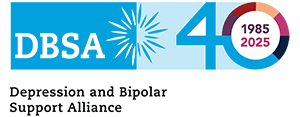988 Crisis Hotline Increases Timely Access to Mental Health Support
Since going live across the country in July 2022, the number of calls to the country’s first three-digit mental health crisis dialing code has increased significantly. According to the Kaiser Family Foundation the 988-lifeline received over 2 million contacts, including calls, text messages, and chat messages nationally. This represents an increase of 43% over the previous year.
This increase has not meant longer wait times. During that same period, response time decreased to ¼ what it had been a year earlier.
Individuals can connect via talk, text, or chat with trained crisis counselors when they dial the three digits 988. Later this year, video options will become available.
The new three-digit number is essential because, in the past, people often called 911 when they or a loved one experienced a mental health emergency. This process strains local resources and can inadvertently criminalize living with mental health conditions.
Calls to 988 are automatically routed by area code to the nearest crisis center based on the area code of the caller’s phone number. While there are only 200 local crisis call centers today, no one should receive a busy signal. If the local center does not have the capacity, the caller is automatically routed to the Lifeline regional backup call center.
Should the crisis counselor determine that the caller or others are in immediate danger and need additional services, they connect the caller to emergency services like 911. Some evidence suggests that more than 98 percent of calls to crisis response lines are resolved without enacting that precaution.
Federal funding to the states has been instrumental in setting up the infrastructure to implement 988. Still, we must scale the size of the network and build the crisis intervention workforce. Supporting workforce development initiatives to train more state-credentialed peer support specialists is one pillar. Advocating for state government support is another.
At this writing, only five states have passed legislation to fund 988 with a small fee attached to cell phone bills—similar to how 911 is funded. Sixteen states have created a trust fund to fund 988 permanently. Follow this link to see how your state is funding the service.
DBSA supports model legislation created by several advocacy organizations and follows the activities of the state general assemblies. We will provide an advocacy tool kit and a webinar to support local efforts throughout the year. Stay tuned to Making Mental Health Matter to access these resources and learn tips on engaging with your state legislators.
Your Voice Can Make a Difference
Please support this work by forwarding this message to colleagues, family, and friends who are passionate about this cause to assist us in this grassroots effort to make our voice heard.
To continue to receive communications about issues that support access to quality mental healthcare,
Success at the National Level – Peer Support and Mental Health Programs Move Forward
Late last year, Congress ended the legislative year with the passage of the Consolidated Appropriations Act, a 4,152-page bill also known as the “Omnibus.” This legislation establishes the 2023 federal budget and the creation/reauthorization of programs across the government. Reflecting the many recent societal challenges faced by Americans, mental health issues were a significant winner in this funding process. DBSA is excited that two legislative initiatives saw final approval while a third made substantial strides.
- Expansion of the use of Peer Support Specialists within the Veterans Administration Hospital system to all 160 hospitals over the next six years.
- A new program at SAMHSA with $13 million for virtual peer-supported mental health services.
Left on the proverbial cutting room floor is an initiative to create a federal definition of a mental health Peer Support Specialist. So too, another to permit Medicare to reimburse providers for peer support services. However, the legislation opened the door by authorizing limited reimbursement for peer support services in crisis response programs.
Where does this leave us moving forward? There is hope that, as addressing behavioral health issues is seen as one of the few issues with bipartisan support, we can continue to make progress even with the current political gridlock.
Stay tuned to Making Mental Health Matter for new developments in expanding access to peer support.
Legislative Advocacy Tips: Why Joining Coalitions is a Form of Self-Advocacy
DBSA’s mission is to provide hope, help, support, and education to improve the lives of people who live with mood disorders. One way we do that is by educating our community on public policy and political participation. That starts with publishing the monthly Making Mental Health Matter newsletter and emailing time-sensitive legislative action alerts to our 7,000 advocacy subscribers. DBSA also encourages advocates to become engaged beyond responding to action alerts.
In January, we told you how Eric got involved at the local level by joining mental health boards. In February, we shared how Jennifer advocated to create a new peer advisory board in Virginia.
While you may not be ready to take those steps today, one way to dip in your toe is to seek out and attend meetings of a local mental health coalition. A coalition is formed when two or more groups work together to achieve a common goal. DBSA belongs to numerous local and national coalitions that work on improving access to peer support and quality mental health services. We welcome volunteers that are interested in attending these meetings. Your participation not only impacts future public policy but serves as an engagement in self-advocacy that can improve your mental health and wellness.
In her article “How could voting benefit mental health?” Maria Cohut, Ph.D., cites research that shows political activism can alleviate stress, including from discrimination, and is linked to happiness for individuals with a mental health challenge.
Eric recommends advocating for yourself and your community by joining coalitions. Seeking and attending coalition meetings, learning from individual members, and asking questions about issues can speak to and strengthen the inner voice within all of us that affirms “I matter.”
To learn more about how to attend coalition meetings DBSA attends, email us at advocacy@dbsalliance.org.
To find more self-advocacy tips, visit DBSA’s website for free resources, wellness tools, stories of inspiration, and online support groups.
This article is for informational purposes only and should not be considered medical advice. If you’re having a mental health emergency, contact the 988 Suicide & Crisis Lifeline for immediate support by calling, texting, or chatting 988. You can also text HOME to 741741 -the Crisis Text Line- anywhere in the country to chat with a trained crisis counselor
Advocate Training Resources
How can we ensure our collective voices make a difference? DBSA will be highlighting recordings of our virtual advocacy trainings. In this panel discussion, advocates share their experience and how you can position peers in the center of decision-making and as the drivers of systemic change to:
- Promote the value of peer support, including broadening the adoption of peer support specialists throughout mental health delivery
- Deploy simple techniques to engage chapter participants in legislation and public policy
- Establish a leadership role in research/clinical trial opportunities to ensure peer interests and perspectives influence outcomes
Briefly Noted
- Tip of the Week. When emailing your legislator, customization is key! Legislators get a lot of form emails, and you can cut through the noise by adding your personal story or data relevant to their district. Keeping emails brief and customized is the best way to have your message read.
- The Centers for Medicare and Medicaid Services published a new fact sheet on waivers, flexibilities, and transitioning from the COVID-19 public health emergency. Specifically, this fact sheet covers COVID-19 vaccines, testing, and treatments, telehealth services, continuing flexibilities for healthcare professionals, and inpatient hospital care at home.
- This month, SAMHSA updated FindTreatment.gov, a comprehensive resource of treatments for mental health. Now individuals can search for treatment from multiple sources, access an interactive map, filter for specific treatments, and download printer-friendly results. Providers and treatment facilities can register on the site, enhancing outreach to their communities and promoting visibility of services. All searches of FindTreatment.gov remain anonymous.


